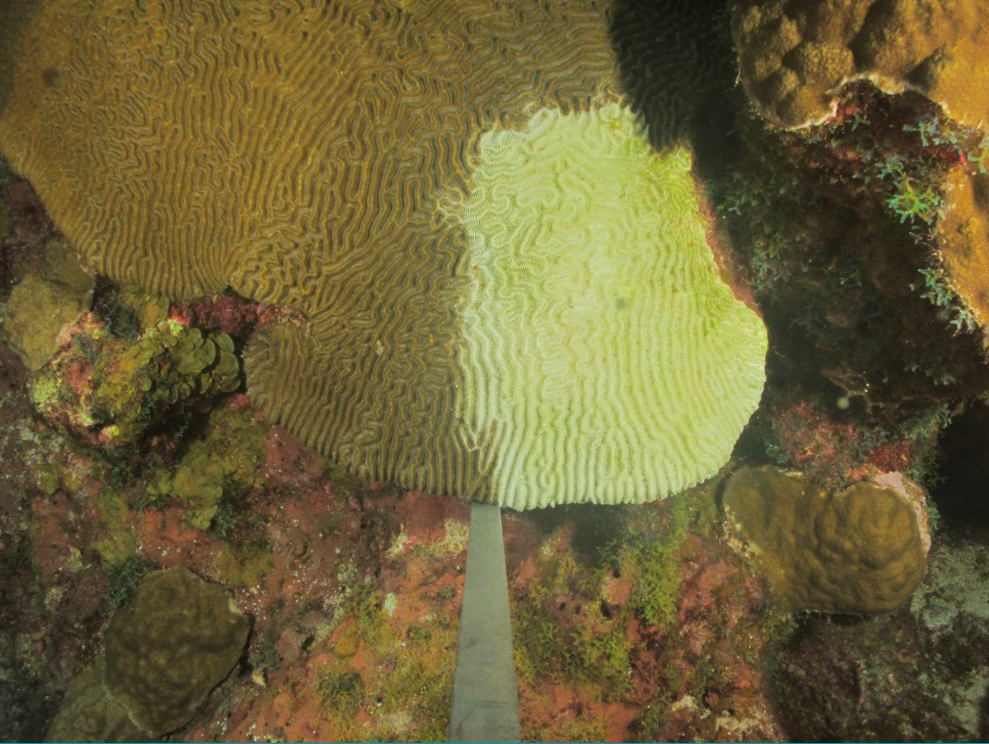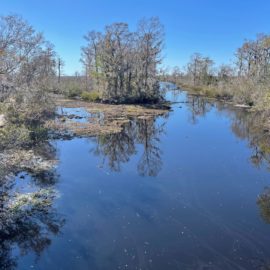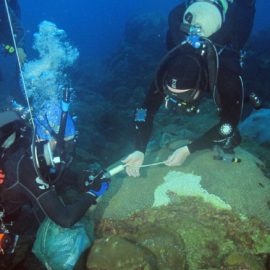
Kristen Ewen, National Park Service
There is a mysterious disease that is ravishing the coral off the Louisiana coast. A fix is planned.
The federal government plans to pour $125 million into the fight against a mysterious disease that has ravaged corals in Florida and much of the Caribbean, and now poses a dire threat to the treasured reefs off the Louisiana and Texas coasts. Released this week, the National Oceanic and Atmospheric Administration plan aims to halt the spread of stony coral tissue loss disease, a newly discovered affliction with a 94% mortality rate among almost two dozen coral species. Scientists found evidence the disease recently invaded the Gulf of Mexico. NOAA divers in Flower Garden Banks National Marine Sanctuary, a New Orleans-sized sanctuary off the coasts of Louisiana and Texas, spotted corals with lesions and other symptoms associated with stony coral disease. While the disease’s presence in the sanctuary hasn’t been confirmed, one NOAA scientist said coral experts are “90% sure” it’s there. The disease’s rapid spread and coral-killing prowess are unprecedented. “We’ve never had a disease with as much impact as stony coral tissue loss disease,” said Andy Bruckner, a NOAA research coordinator.
nola.com

The disease was first discovered in Florida after it had destroyed the coral there.
Identified for the first time in Florida eight years ago, the disease has already decimated large sections of Florida’s Coral Reef, North America’s only barrier reef, and quickly spread to the U.S. Virgin Islands, Puerto Rico and at least 20 countries in the Caribbean region. Scientists working at Flower Garden Banks said a few weeks ago that they didn’t have enough funding to tackle the disease, which requires divers to apply medication directly on the coral’s sores. The new plan aims to change that, earmarking at least $625,000 for the treatment and rescue of corals in the sanctuary. NOAA says the plan will be funded by a combination of government and private-sector sources, including grants and other assistance from nonprofit groups. NOAA is shipping small colonies of the sanctuary’s corals to an aquarium in Galveston, Texas. The rescued corals could be used to repopulate areas hit hard by the disease.

Kristen Ewen, National Park Service
The reef is one of the northern most coral reef.
About 100 miles from the Louisiana coast, the sanctuary includes the northernmost coral reefs in the continental United States and is one of the few places in the Gulf that’s off-limits to commercial fishing and oil and gas exploration. The sanctuary’s fragile corals are a haven for a range of marine life, including endangered sea turtles and giant manta rays. The sanctuary is vital to several commercially important species, including mackerel, grouper and snapper, which use the sanctuary to spawn and find food. There’s worry that the disease could wipe out the corals that form the foundation of the sanctuary’s reefs.

NOAA
The plan is to discover how the disease occurs, spreads and to see how to contain it.
NOAA’s plan will focus on determining the disease’s cause, how it moves from reef to reef, as well as greatly expand treatment and intervention at several locations. A key element of the plan is preventing its spread to the Pacific Ocean. NOAA is working with several Pacific nations on a possible collective response to the disease’s migration to other oceans, which is regarded as nearly inevitable. Little is known about the disease. Scientists are still unsure what, exactly, it is, positing that it may be a virus, bacteria or combination of the two. Climate change is likely helping it spread. Warming ocean waters weaken corals while making many diseases stronger. Pollution, fishing, shipping and coastal development are also likely worsening the situation. The plan will investigate a likely transmission culprit of spread: ballast water. Water held in ships may contain the disease and transport it from place to place. Research that’s already underway may recommend disinfection of ballast water and other treatments. “This is potentially a global threat,” said Jennifer Koss, director of NOAA’s Coral Reef Conservation Program. “It’ll be a complex challenge for coral reefs for years to come.”
A needed fix and if the cause is ballast water, then the shipping community will be involved.



